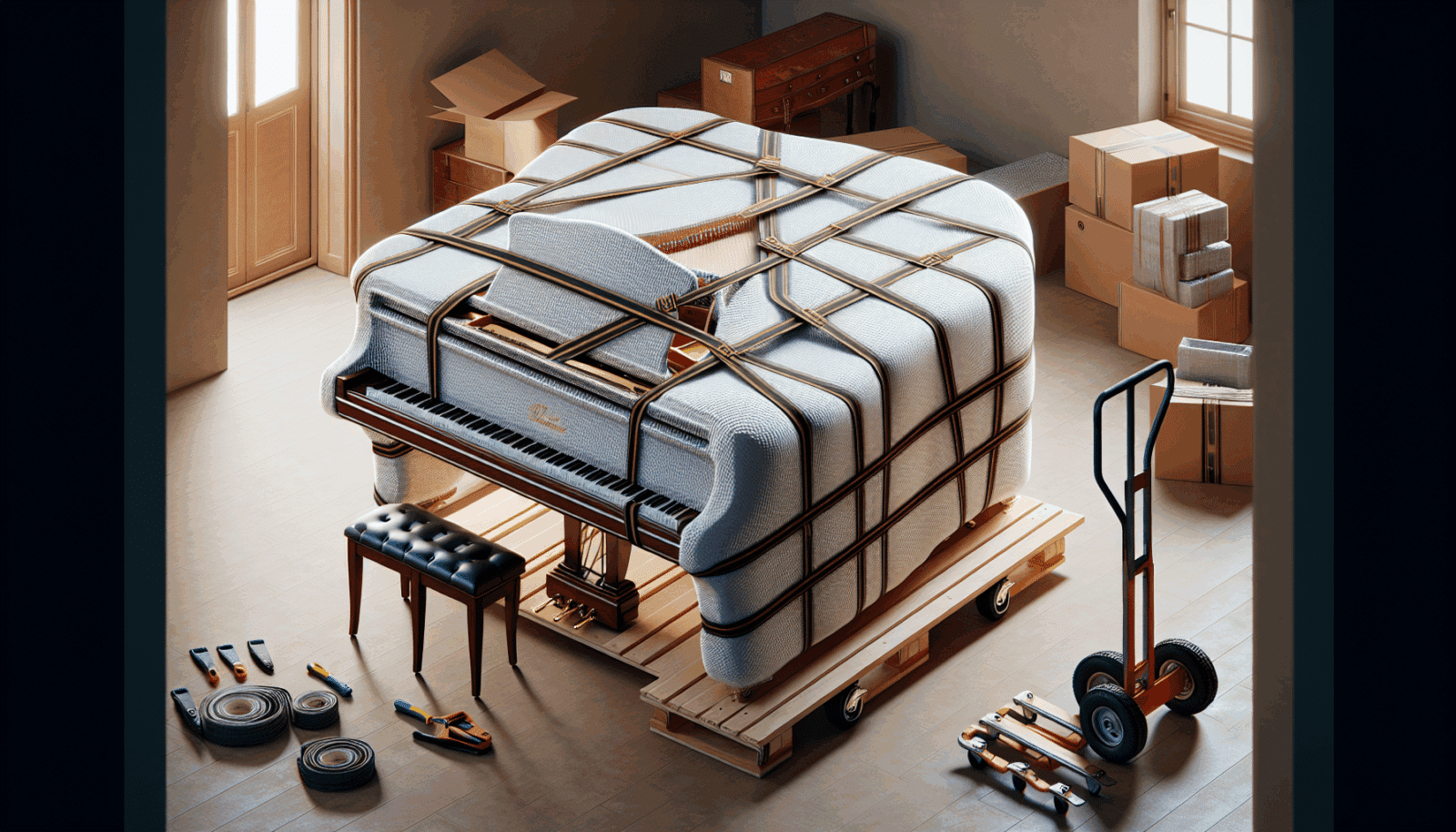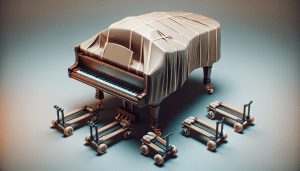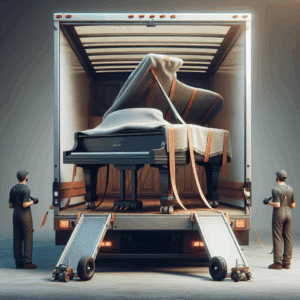Moving a piano can feel like trying to juggle eggs while wearing oven mitts. We get it—pianos are heavy, awkward, and valuable. That’s where we come in. Utah Piano Movers specializes in safely transporting your precious instrument without a hitch. In this post, we’ll share essential piano moving tips to make your relocation as smooth as a sonata in C Major.
Contents
Understanding Your Piano’s Anatomy
Before diving into the nitty-gritty of moving your piano, it’s crucial to understand its structure. Pianos are intricate instruments with thousands of moving parts. Whether you own an upright or Grand Piano, knowing the key components—such as strings, hammers, and keys—can help prepare you for the moving process. This knowledge is your first layer of protection against unexpected damage.
Pianos come in various shapes and sizes, each presenting its own moving challenges. Upright pianos are typically easier to handle than their grand counterparts, but both require special attention. Familiarize yourself with your piano’s unique elements to better appreciate the care we take in ensuring its safe journey.
Assessing Your Space
Walking through your current and new location is a fundamental step. Not only do tight spaces and staircases cause logistical headaches, but they also increase the risk of damage. Consequently, assessing your environment helps us plan effectively.
Clear pathways and measure doorways, hallways, and staircases to ensure there is enough room for a seamless exit and entry. These details enable us to bring the right equipment and crew to handle the job, minimizing potential obstacles.
Getting the Right Equipment
A piano is not something you can toss into the back of a pickup truck. Specialized equipment is required for a successful move. Dollies, straps, and padding are only the beginning. Equipping ourselves properly ensures both the piano’s safety and ours.
Just as a surgeon needs the right tools to perform an operation, we need appropriate gear to execute the move successfully. Investing in proper moving equipment prevents unnecessary mishaps and provides peace of mind.
Prepping Your Piano
Preparing your piano for relocation is a vital step. First, close and secure the keyboard lid if it is equipped with a lock. Next, wrap the entire piano in moving blankets, securing them with packing tape. This prevents scratches and dings along the way.
Taking the time to prep your piano is like applying sunscreen before a beach day; it shields the instrument from potential hazards during the move.
Carrying Out the Move
Once everything is ready, it’s time for the big day. Our experienced team knows how to handle a piano with care and precision. We’ll communicate each step of the process with you, ensuring complete transparency.
Base some of our actions on your detailed description of the piano and the space. This helps us tailor our approach to your specific needs. With all preparations in place, we’ll carefully execute the move, pivoting and lifting as necessary.
Stairs and tight corners can turn a simple move into a complicated ballet. Fortunately for you, we’ve mastered the choreography. Deep breaths, steady hands, and a lot of patience can get a piano through the trickiest situations.
We use specialized techniques and equipment to navigate these challenges, ensuring that your piano remains unharmed. Our team’s expertise minimizes the margin for error, allowing you to relax while watching the process unfold.
The Importance of Teamwork
Moving a piano isn’t a solo act. It requires coordinated teamwork. Our team understands the importance of communication and collaboration. Everyone has a role to play—from lifting the piano to guiding it through doorways.
Effective teamwork reduces stress and risk during the move. Just like an orchestra, the team works in harmony, each member complementing the other to make the move hassle-free.
Planning for Weather Conditions
Weather conditions can put a damper on moving day, but not if you’re prepared. Rain, snow, or heat waves can all present unique challenges. We pay attention to the weather forecast, making adjustments to protect your piano.
Unfavorable weather is no match for our contingency plans and readiness. Your piano will arrive in pristine condition, come rain or shine.
Piano Reassembly and Placement
Upon arrival at your new home, setting up your piano is more than just placing it on a stand or in a corner. If your piano needed disassembly before the move, our team will expertly put it back together. Next, we position it to your liking, ensuring it adds to your space’s aesthetic.
Reassembly and placement are about returning your piano to its natural glory, ready for you to enjoy its sound once more.
Post-Move Piano Care
After moving, your piano deserves a little TLC. Temperature and humidity shifts can affect tuning and sound quality. Routine maintenance after relocation is advisable.
Here is a quick checklist:
- Tuning – A fresh tuning should occur a few weeks after relocation to account for atmospheric changes.
- Inspection – Check for any minor damages that might have occurred during the move, despite all precautions.
- Cleaning – Gently wipe down surfaces to remove dust accumulated during transport.
- Levelling – Ensure your piano sits evenly to maintain sound quality and avoid adding stress to its frame.
- Positioning – Keep your piano away from direct sunlight, heaters, or air conditioners to best preserve its condition.
Moving a piano doesn’t have to be an ordeal. Contact Us for stress-free Services by phone at 801-396-7323 or Request a Free Quote.




